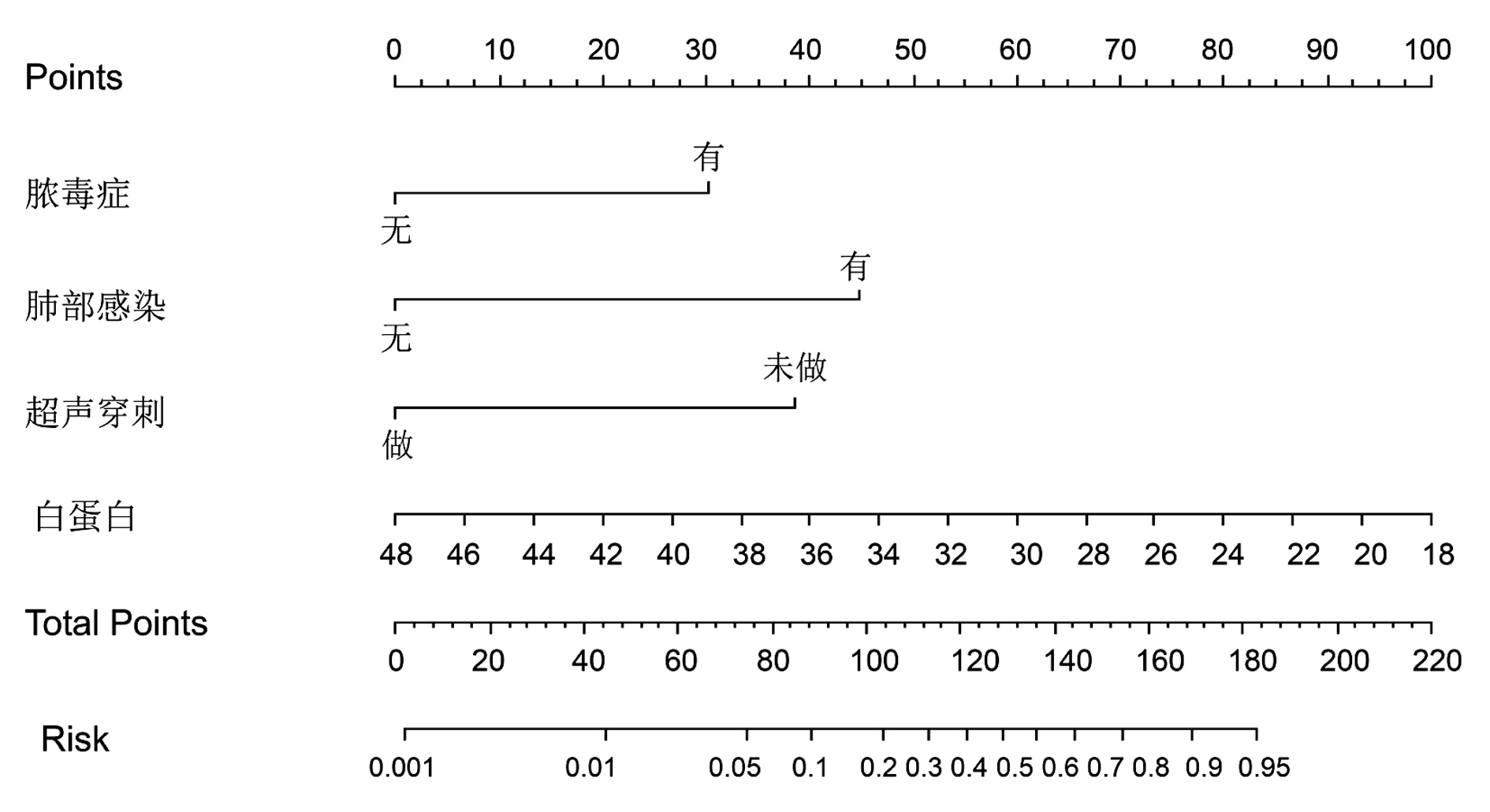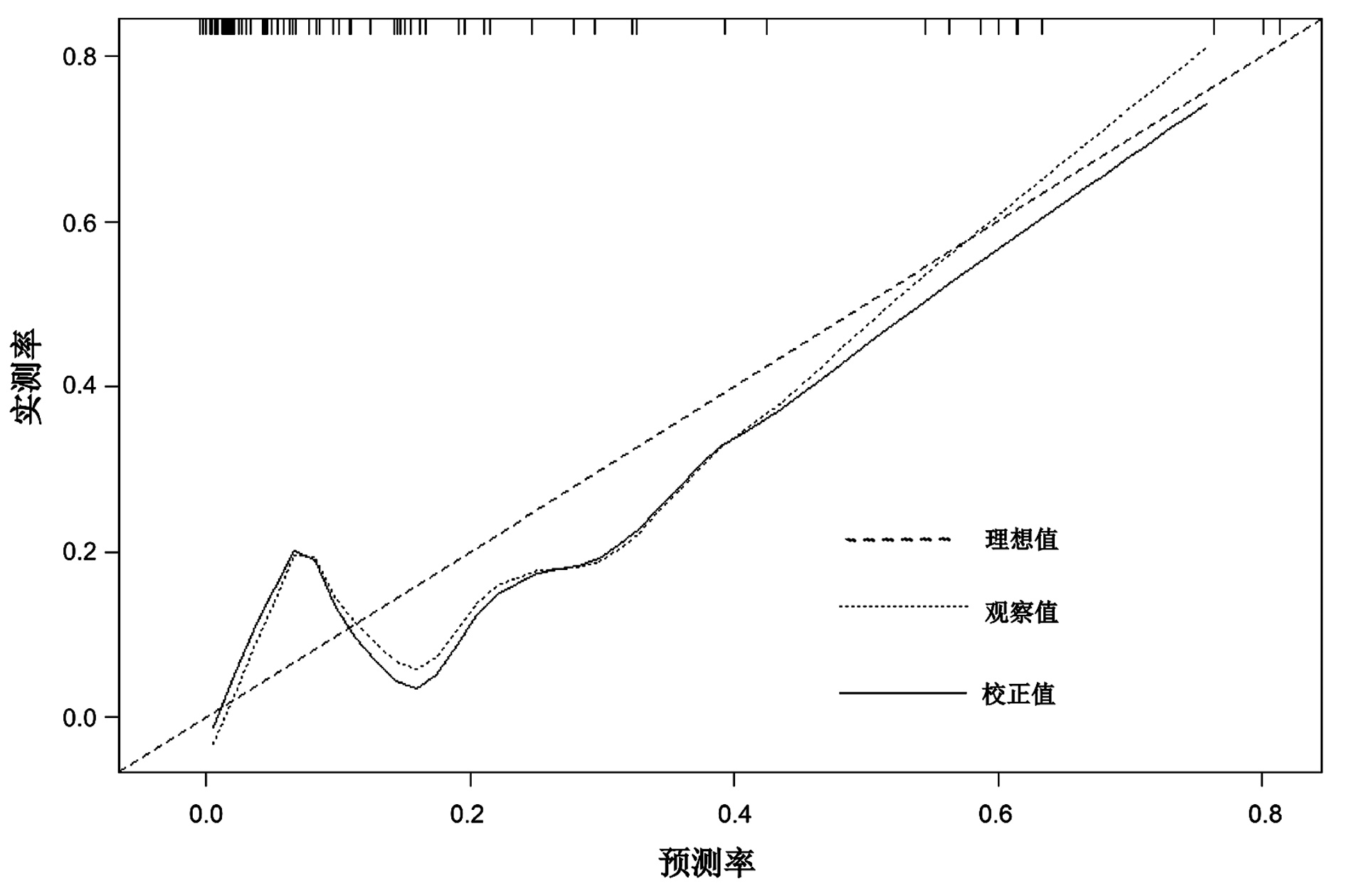| [1] |
MOHSEN AH, GREEN ST, READ RC, et al. Liver abscess in adults: ten years experience in a UK centre[J]. QJM, 2002, 95(12): 797-802. DOI: 10.1093/qjmed/95.12.797. |
| [2] |
CHEN YC, LIN CH, CHANG SN, et al. Epidemiology and clinical outcome of pyogenic liver abscess: an analysis from the National Health Insurance Research Database of Taiwan, 2000-2011[J]. J Microbiol Immunol Infect, 2016, 49(5): 646-653. DOI: 10.1016/j.jmii.2014.08.028. |
| [3] |
TSAI FC, HUANG YT, CHANG LY, et al. Pyogenic liver abscess as endemic disease, Taiwan[J]. Emerg Infect Dis, 2008, 14(10): 1592-1600. DOI: 10.3201/eid1410.071254. |
| [4] |
LIU Y, WANG JY, JIANG W. An increasing prominent disease of Klebsiella pneumoniae liver abscess: Etiology, diagnosis, and treatment[J]. Gastroenterol Res Pract, 2013, 2013: 258514. DOI: 10.1155/2013/258514. |
| [5] |
YIN D, JI C, ZHANG S, et al. Clinical characteristics and management of 1572 patients with pyogenic liver abscess: A 12-year retrospective study[J]. Liver Int, 2021, 41(4): 810-818. DOI: 10.1111/liv.14760. |
| [6] |
SIU LK, YEH KM, LIN JC, et al. Klebsiella pneumoniae liver abscess: a new invasive syndrome[J]. Lancet Infect Dis, 2012, 12(11): 881-887. DOI: 10.1016/S1473-3099(12)70205-0. |
| [7] |
CERWENKA H. Pyogenic liver abscess: differences in etiology and treatment in Southeast Asia and Central Europe[J]. World J Gastroenterol, 2010, 16(20): 2458-2462. DOI: 10.3748/wjg.v16.i20.2458. |
| [8] |
RUIZ-HERNÁNDEZ JJ, LEÓN-MAZORRA M, CONDE-MARTEL A, et al. Pyogenic liver abscesses: mortality-related factors[J]. Eur J Gastroenterol Hepatol, 2007, 19(10): 853-858. DOI: 10.1097/MEG.0b013e3282eeb53b. |
| [9] |
YANG CC, YEN CH, HO MW, et al. Comparison of pyogenic liver abscess caused by non-Klebsiella pneumoniae and Klebsiella pneumoniae[J]. J Microbiol Immunol Infect, 2004, 37(3): 176-184.
|
| [10] |
CHUNG DR, LEE SS, LEE HR, et al. Emerging invasive liver abscess caused by K1 serotype Klebsiella pneumoniae in Korea[J]. J Infect, 2007, 54(6): 578-583. DOI: 10.1016/j.jinf.2006.11.008. |
| [11] |
HUI P, ZHU P, LIAO W, et al. Bacterial flora distribution and antimicrobial resistance of pyogenic liver abscess: a multicenter retrospective study (A report of 897 cases)[J]. Chin J Dig Surg, 2019, 18(10): 924-933. DOI: 10.3760/cma.j.issn.1673-9752.2019.10.007. |
| [12] |
LEE JH, JANG YR, AHN SJ, et al. A retrospective study of pyogenic liver abscess caused primarily by Klebsiella pneumoniae vs. non-Klebsiella pneumoniae: CT and clinical differentiation[J]. Abdom Radiol (NY), 2020, 45(9): 2669-2679. DOI: 10.1007/s00261-019-02389-2. |
| [13] |
XU SB, YANG SY, WENG SS, et al. Clinical characteristics of patients with Klebsiella pneumoniae pyogenic liver abscess[J]. Chin J Intern Med, 2020, 59(6): 439-444. DOI: 10.3760/cma.j.cn112138-20190610-00403. |
| [14] |
PASTAGIA M, ARUMUGAM V. Klebsiella pneumoniae liver abscesses in a public hospital in Queens, New York[J]. Travel Med Infect Dis, 2008, 6(4): 228-233. DOI: 10.1016/j.tmaid.2008.02.005. |
| [15] |
MOORE LS, CLARKE IL, DONALDSON H, et al. Community-acquired Klebsiella pneumoniae liver abscess: the London experience[J]. Infection, 2014, 42(1): 219-221. DOI: 10.1007/s15010-013-0520-1. |
| [16] |
FANG CT, LAI SY, YI WC, et al. Klebsiella pneumoniae genotype K1: an emerging pathogen that causes septic ocular or central nervous system complications from pyogenic liver abscess[J]. Clin Infect Dis, 2007, 45(3): 284-293. DOI: 10.1086/519262. |
| [17] |
YAO N, KANG W, LIAN JQ, et al. Clinical features of Klebsiella pneumoniae liver abscess versus Escherichia coli liver abscess[J]. J Clin Hepatol, 2020, 36(9): 2010-2014. DOI: 10.3969/j.issn.1001-5256.2020.09.020. |
| [18] |
LIN JC, SIU LK, FUNG CP, et al. Impaired phagocytosis of capsular serotypes K1 or K2 Klebsiella pneumoniae in type 2 diabetes mellitus patients with poor glycemic control[J]. J Clin Endocrinol Metab, 2006, 91(8): 3084-3087. DOI: 10.1210/jc.2005-2749. |
| [19] |
CHEN SC, WU WY, YEH CH, et al. Comparison of Escherichia coli and Klebsiella pneumoniae liver abscesses[J]. Am J Med Sci, 2007, 334(2): 97-105. DOI: 10.1097/MAJ.0b013e31812f59c7. |
| [20] |
QIAN Y, WONG CC, LAI S, et al. A retrospective study of pyogenic liver abscess focusing on Klebsiella pneumoniae as a primary pathogen in China from 1994 to 2015[J]. Sci Rep, 2016, 6: 38587. DOI: 10.1038/srep38587. |
| [21] |
YOON JH, KIM YJ, JUN YH, et al. Liver abscess due to Klebsiella pneumoniae: risk factors for metastatic infection[J]. Scand J Infect Dis, 2014, 46(1): 21-26. DOI: 10.3109/00365548.2013.851414. |
| [22] |
CAI MT, FAN CL, LI L, et al. Case-control analysis of liver abscess in patients with acquired immunodeficiency syndrome[J]. Chin J Infect Chemother, 2019, 19(5): 465-472. DOI: 10.16718/j.1009-7708.2019.05.001. |
| [23] |
ASTON SJ. Pneumonia in the developing world: Characteristic features and approach to management[J]. Respirology, 2017, 22(7): 1276-1287. DOI: 10.1111/resp.13112. |
| [24] |
NEILL L, EDWARDS F, COLLIN SM, et al. Clinical characteristics and treatment outcomes in a cohort of patients with pyogenic and amoebic liver abscess[J]. BMC Infect Dis, 2019, 19(1): 490. DOI: 10.1186/s12879-019-4127-8. |
| [25] |
LI S, YU S, PENG M, et al. Clinical features and development of Sepsis in Klebsiella pneumoniae infected liver abscess patients: a retrospective analysis of 135 cases[J]. BMC Infect Dis, 2021, 21(1): 597. DOI: 10.1186/s12879-021-06325-y. |
| [26] |
|
| [27] |
MATSUKUMA Y, TANAKA S, TANIGUCHI M, et al. Association of geriatric nutritional risk index with infection-related mortality in patients undergoing hemodialysis: The Q-Cohort Study[J]. Clin Nutr, 2019, 38(1): 279-287. DOI: 10.1016/j.clnu.2018.01.019. |
| [28] |
SOLOMKIN JS, MAZUSKI JE, BRADLEY JS, et al. Diagnosis and management of complicated intra-abdominal infection in adults and children: guidelines by the Surgical Infection Society and the Infectious Diseases Society of America[J]. Clin Infect Dis, 2010, 50(2): 133-164. DOI: 10.1086/649554. |
| [29] |
LIU L, CHEN W, LU X, et al. Pyogenic liver abscess: A retrospective study of 105 cases in an emergency department from east China[J]. J Emerg Med, 2017, 52(4): 409-416. DOI: 10.1016/j.jemermed.2016.09.026. |








 DownLoad:
DownLoad:


